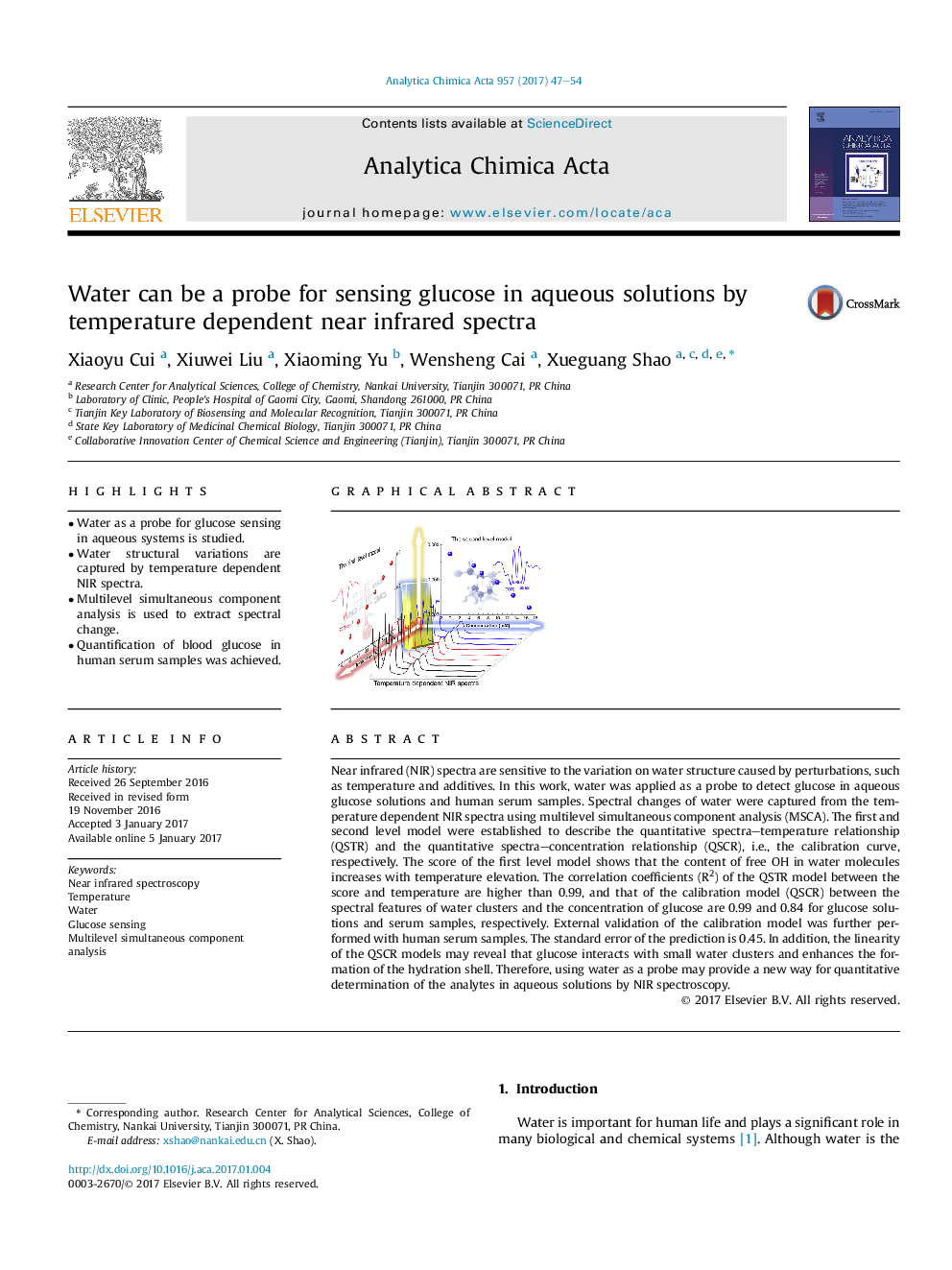| Article ID | Journal | Published Year | Pages | File Type |
|---|---|---|---|---|
| 5131172 | Analytica Chimica Acta | 2017 | 8 Pages |
â¢Water as a probe for glucose sensing in aqueous systems is studied.â¢Water structural variations are captured by temperature dependent NIR spectra.â¢Multilevel simultaneous component analysis is used to extract spectral change.â¢Quantification of blood glucose in human serum samples was achieved.
Near infrared (NIR) spectra are sensitive to the variation on water structure caused by perturbations, such as temperature and additives. In this work, water was applied as a probe to detect glucose in aqueous glucose solutions and human serum samples. Spectral changes of water were captured from the temperature dependent NIR spectra using multilevel simultaneous component analysis (MSCA). The first and second level model were established to describe the quantitative spectra-temperature relationship (QSTR) and the quantitative spectra-concentration relationship (QSCR), i.e., the calibration curve, respectively. The score of the first level model shows that the content of free OH in water molecules increases with temperature elevation. The correlation coefficients (R2) of the QSTR model between the score and temperature are higher than 0.99, and that of the calibration model (QSCR) between the spectral features of water clusters and the concentration of glucose are 0.99 and 0.84 for glucose solutions and serum samples, respectively. External validation of the calibration model was further performed with human serum samples. The standard error of the prediction is 0.45. In addition, the linearity of the QSCR models may reveal that glucose interacts with small water clusters and enhances the formation of the hydration shell. Therefore, using water as a probe may provide a new way for quantitative determination of the analytes in aqueous solutions by NIR spectroscopy.
Graphical abstractDownload high-res image (228KB)Download full-size image
